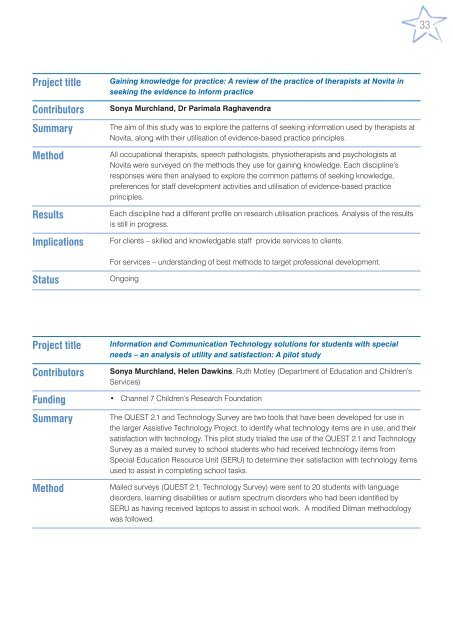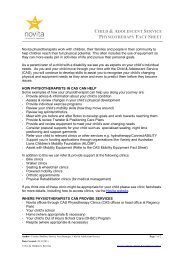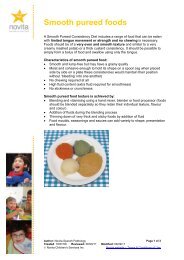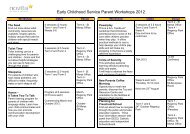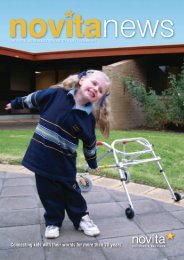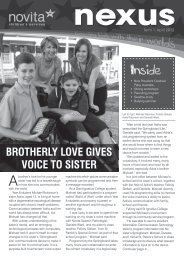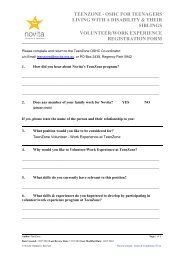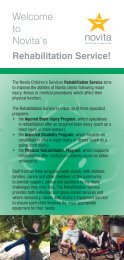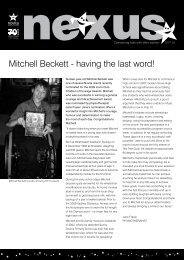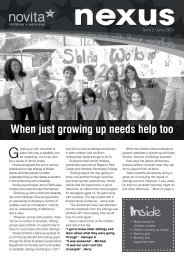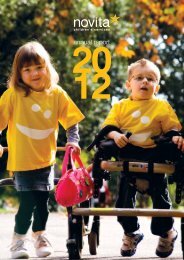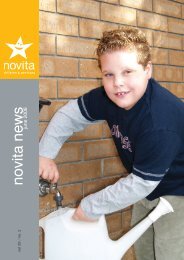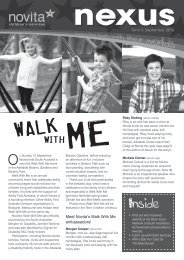Novita Research Report - 2004 to 2007 - Novita Children's Services
Novita Research Report - 2004 to 2007 - Novita Children's Services
Novita Research Report - 2004 to 2007 - Novita Children's Services
- No tags were found...
Create successful ePaper yourself
Turn your PDF publications into a flip-book with our unique Google optimized e-Paper software.
33Project titleContribu<strong>to</strong>rsSummaryMethodResultsImplicationsGaining knowledge for practice: A review of the practice of therapists at <strong>Novita</strong> inseeking the evidence <strong>to</strong> inform practiceSonya Murchland, Dr Parimala RaghavendraThe aim of this study was <strong>to</strong> explore the patterns of seeking information used by therapists at<strong>Novita</strong>, along with their utilisation of evidence-based practice principles.All occupational therapists, speech pathologists, physiotherapists and psychologists at<strong>Novita</strong> were surveyed on the methods they use for gaining knowledge. Each discipline’sresponses were then analysed <strong>to</strong> explore the common patterns of seeking knowledge,preferences for staff development activities and utilisation of evidence-based practiceprinciples.Each discipline had a different profile on research utilisation practices. Analysis of the resultsis still in progress.For clients – skilled and knowledgable staff provide services <strong>to</strong> clients.For services – understanding of best methods <strong>to</strong> target professional development.StatusOngoingProject titleContribu<strong>to</strong>rsFundingSummaryMethodInformation and Communication Technology solutions for students with specialneeds – an analysis of utility and satisfaction: A pilot studySonya Murchland, Helen Dawkins, Ruth Motley (Department of Education and Children’s<strong>Services</strong>)• Channel 7 Children’s <strong>Research</strong> FoundationThe QUEST 2.1 and Technology Survey are two <strong>to</strong>ols that have been developed for use inthe larger Assistive Technology Project, <strong>to</strong> identify what technology items are in use, and theirsatisfaction with technology. This pilot study trialed the use of the QUEST 2.1 and TechnologySurvey as a mailed survey <strong>to</strong> school students who had received technology items fromSpecial Education Resource Unit (SERU) <strong>to</strong> determine their satisfaction with technology itemsused <strong>to</strong> assist in completing school tasks.Mailed surveys (QUEST 2.1, Technology Survey) were sent <strong>to</strong> 20 students with languagedisorders, learning disabilities or autism spectrum disorders who had been identified bySERU as having received lap<strong>to</strong>ps <strong>to</strong> assist in school work. A modified Dilman methodologywas followed.


